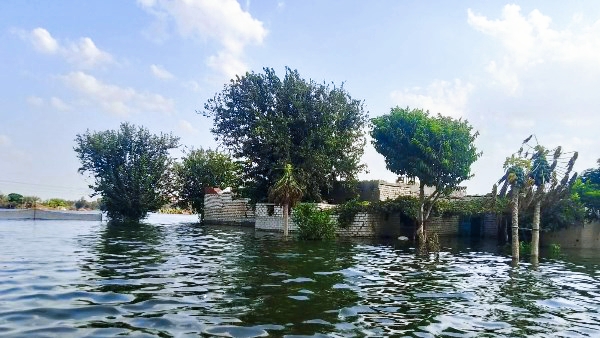In a new tragic incident, the Egyptian Ministry of Water Resources and Irrigation revealed details of this year's Nile River flood, which resulted in the drowning of a village in the Menoufia Governorate, accusing Ethiopia of actions that threaten the security and stability of the downstream countries.
The ministry stated in an official statement that it is monitoring the developments of this year's flood, indicating that Ethiopia's unilateral actions in managing the Renaissance Dam pose a direct threat to the lives and security of the people of the Nile Basin countries.
* Accusation of Ethiopia for politically exploiting water
The statement confirmed that these Ethiopian practices, which the ministry described as "irresponsible," reveal the false claims of Ethiopia regarding not harming the downstream countries.
The ministry added that these actions expose a political exploitation of water at the expense of lives and regional security, noting that the "Renaissance Dam" serves only Ethiopia's political agenda at the expense of water safety in the downstream countries.
* Unprecedented flood in the Nile River
According to the Ministry of Irrigation, this year's flood came in an unprecedented manner, as the water level of the Nile River rose during the summer due to increased water revenues from the Blue Nile and the White Nile.
And although this flood is about 25% higher than the average, Ethiopian actions significantly contributed to the exacerbation of the situation.
According to official data, Ethiopia was supposed to start gradually storing water from July until the end of October, while regularly releasing water to generate electricity.
However, the Ethiopians, as the ministry mentioned, violated the agreed technical rules, as they stored larger amounts of water than expected, which led to unjustified reductions in releases, contributing to a sudden increase in water levels.
* Ethiopia announces unjustified actions
At the end of August, it was noted that the operators of the Renaissance Dam reduced releases from 280 million cubic meters per day to 110 million cubic meters, which led to water accumulation behind the dam.
Then on September 10, after the "inauguration celebration of the dam," the Ethiopian operator released huge amounts of water reaching 485 million cubic meters in one day, causing an abnormal flow of water to Sudan and Egypt.
It was also revealed that the Ethiopians opened the spillways in an unorganized manner in an attempt to present the dam in a more "media-friendly" image at the expense of water security.
* Floods invade villages and drown agricultural lands
This action caused a sudden increase in water flow to vast areas of agricultural land in Sudan and Egypt, resulting in the drowning of Delhamo village in Menoufia Governorate and threatening the lives of citizens there.
The village of Delhamo suffered heavy losses estimated at 900 acres of agricultural land that were submerged.
In the same context, authorities in Ashmoun city warned of rising Nile water levels, issuing instructions for citizens to evacuate homes and riverbank lands in anticipation of increased water coming from the dam.
* Egypt raises alert level to face the consequences of the flood
The Egyptian Ministry of Irrigation also announced precautionary measures to address the aftermath of the flood, which includes coordination with local authorities to deal with the damages resulting from these floods.
The ministry emphasized that Ethiopia bears responsibility for the increasing damages due to its poor management of the dam.
The crisis continues to affect water security in Egypt and Sudan, as the residents of these areas remain on alert, while fears increase of the recurrence of such floods in the coming years, amidst Ethiopia's continued implementation of its policies unilaterally.
* In summary:
While both the Egyptian and Sudanese sides continue to warn of the danger of Ethiopia's actions, the "Renaissance Dam" remains the focus of the world's attention, amidst mutual accusations between the three countries, threatening regional stability and directly affecting the lives of millions of people in the Nile Basin countries.

